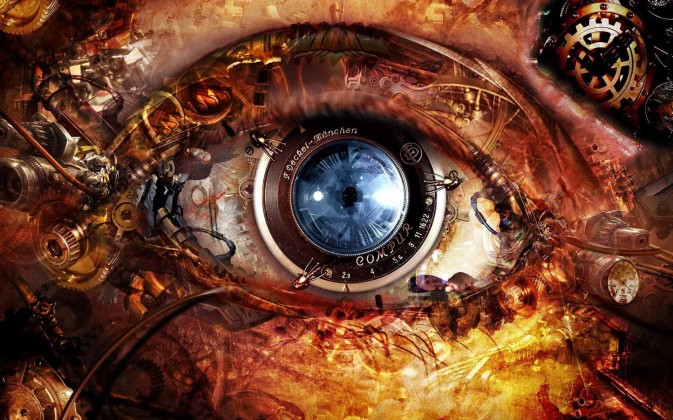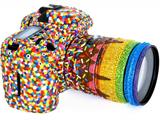The best photography equipment?
According to foreign media reports, the retina of an ordinary person has 5 million cone cells, which are used to perceive visual colors. You can imagine the human eye as equivalent to a 5-million-pixel camera. However, there are also 100 million rod cells in the eye, which are used to perceive monochrome contrast and brightness and darkness, playing an important role in the sharpness of the image shown by your eyes. Moreover, even if we consider the eye's resolution as 105 million pixels, it still underestimates its capabilities because, after all, the eye is not a camera.
The two human eyes continuously capture the surrounding scenery, hoping to obtain a larger visible area than the field of view, then assemble these areas in the brain like stitching photos together to get a panoramic view. Under good lighting conditions, as long as the distance between two fine lines is no less than 0.6 arcminutes (0.01 degrees), our eyes can distinguish them. This means the equivalent pixel size is 0.3 arcminutes. Conservatively estimating, the horizontal field of view of the eye is 120 degrees, and the vertical field of view is 60 degrees, which converts to 576 million pixels of image data.
However, interestingly, when we print 6×4" photos, most people cannot distinguish the difference between 300dpi and 150dpi at normal viewing distances. Therefore, although the human eye and brain can work together to process a large amount of visual data, 150dpi printing output is already sufficient to provide satisfactory photo quality. It should be noted that women have more cone cells, while men have more rod cells. Therefore, girls can always see brighter colors than men, but they won't see clearly in poor light conditions.
If we make a direct comparison, the human eye is roughly equivalent to a camera with a 50mm focal length, an adjustable aperture from F4 to F32, 4 million pixels - yes, only 4 million pixels, sensitivity ranging from ISO50 to ISO6400, and a continuous shooting speed of 1/24 second. The lens is approximately equivalent to 3 groups of 3 lenses, all composed of aspherical lenses. When the aperture (pupil) is less than F32, it usually indicates poisoning by some chemical substance; when greater than F2.8 ~~~ it means the person is dead. The focusing speed is extremely high, able to switch from the farthest to the nearest within 0.5 seconds without ever missing focus. Without nearsightedness, the depth of field is very large. The image processor is roughly equivalent to 4 Digital 3 processors working in parallel, and the background blur recognition processor cannot be measured by any computer on Earth. Color perception generally falls between 32-bit and 48-bit.
Firstly, the function of the human eye is more similar to a video camera than a static camera. The human eyeball repeatedly moves, continuously receiving external light signals, and constantly "updating" the details of the image in the brain. Meanwhile, the brain combines different signals from both eyes, which can also increase the resolution of the image. Moreover, we often move our eyeballs or necks to receive more information. Therefore, the organic combination of the eyeball and the brain makes the resolution of the human eye not solely determined by the light receptors on the iris.
Based on the above viewpoint, assuming there is a square field of view in front, such as an open window, the pixel value is equivalent to [90(degrees) × 60(arcminutes/degree) × 1/0.3]^2 = 324000000, i.e., 324 million pixels. However, you actually won't be aware of so many pixel values; the brain simply acquires "useful" details as needed. From another perspective, the human eye has a very wide field of view, almost reaching 180 degrees. If calculated based on this, even if only 120 degrees are considered, the pixel count reaches 576 million pixels. Such a high pixel value indeed cannot be compared with existing digital cameras.




